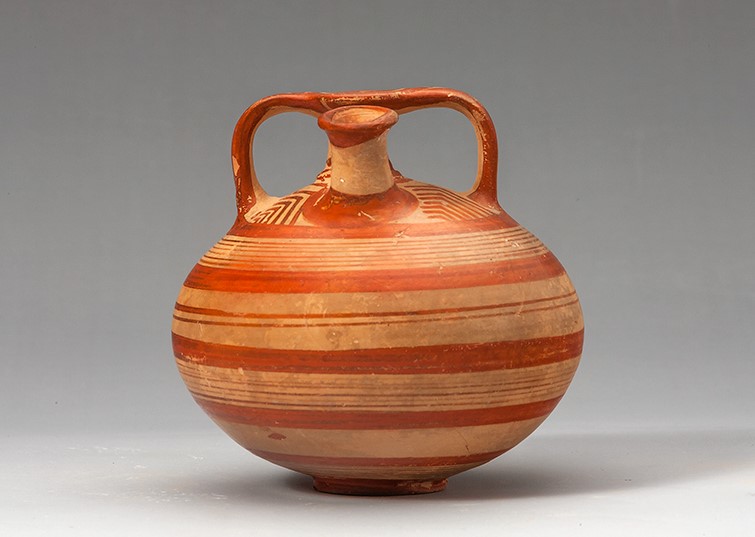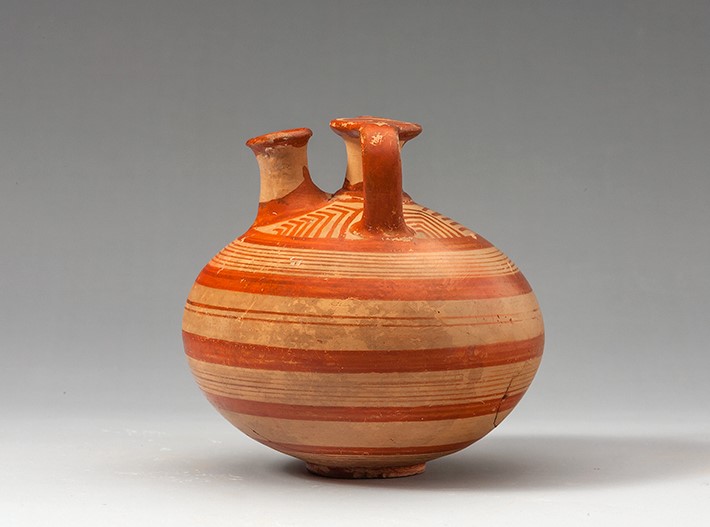Title: Stirrup Jar - 1981.05
Acquisition number: 1981.05
Author or editor: J.R. Green
Culture or period: Mycenaean Late Helladic III A2.
Date: c. 14th century BC
Material: Clay - Terracotta
Object type: Vessels - Jar
Dimensions: 109mm (w) × 107mm (h)
Origin region or location: Greece
Display case or on loan: 1
Keywords: Bronze Age, Late Helladic, Mycenaean
Charles Ede Ltd (London), Antiquities 118 (1981) no. 28 (ill.).
1981.05
Stirrup Jar
Purchased. Ht 10.7cm; diam. 10.9cm.
Intact but for a chip from the spout (which has been restored) and fine cracks in the wall, together with some wear to the surface on the side opposite the spout.
Light pinkish-brown clay with some white inclusions. The surface is cream-buff and smooth. There is a ridge or fillet at the junction of neck and shoulder. Ring foot.
Fairly lustrous orange-brown paint. The disc on the false spout has a solid circle. The outer faces of the handles are painted with bands that continue around the edge of the false spout, leaving reserved triangles near the junction. The spout has a line of paint around the edge of the lip. There is also a broad band around the base of the spout and another on the fillet at the junction of neck and shoulder.
On the shoulder, chevron designs and then, on the body, bands with alternate reserved zones filled with fine lines. The reserved zone just above the maximum diameter also has two lines. There is a band of paint on the foot but the underside is reserved.
Late Helladic IIIA2 (ca 1400-1300 bc). Compare P.A. Mountjoy, Mycenaean Pottery: An Introduction (Oxford University Committee for Archaeology Monograph no. 36, Oxford 1993) 77 no. 169. Ours is slightly more biconical.
Charles Ede Ltd (London), Antiquities 118 (1981) no. 28 (ill.).

